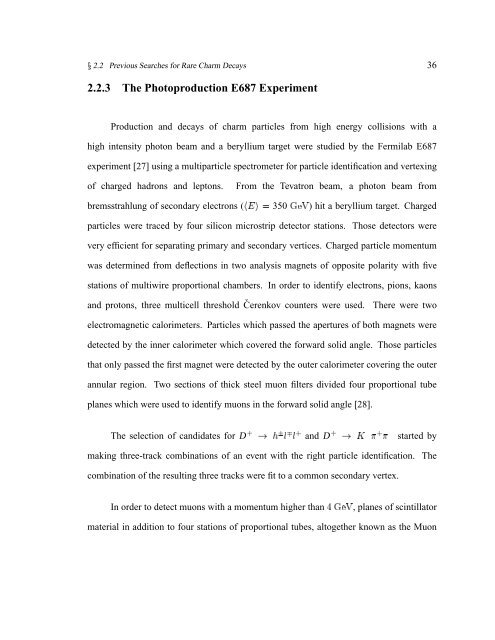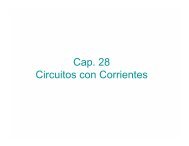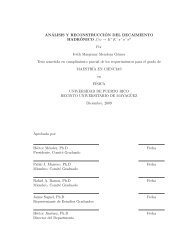A Search for Rare Decay D0 --> mu+mu - High Energy Physics UPRM
A Search for Rare Decay D0 --> mu+mu - High Energy Physics UPRM
A Search for Rare Decay D0 --> mu+mu - High Energy Physics UPRM
Create successful ePaper yourself
Turn your PDF publications into a flip-book with our unique Google optimized e-Paper software.
··i2.2 Previous <strong>Search</strong>es <strong>for</strong> <strong>Rare</strong> Charm <strong>Decay</strong>s 362.2.3 The Photoproduction E687 ExperimentProduction and decays of charm particles from high energy collisions with ahigh intensity photon beam and a beryllium target were studied by the Fermilab E687experiment [27] using a multiparticle spectrometer <strong>for</strong> particle identification and vertexingof charged hadrons and leptons.From the Tevatron beam, a photon beam frombremsstrahlung of secondary (Î*ϱÐ[†electrons “•”—– 350 ) hit a beryllium target. Chargedparticles were traced by four silicon microstrip detector stations. Those detectors werevery efficient <strong>for</strong> separating primary and secondary vertices. Charged particle momentumwas determined from deflections in two analysis magnets of opposite polarity with fivestations of multiwire proportional chambers. In order to identify electrons, pions, kaonsand protons, three multicell threshold Čerenkov counters were used.There were twoelectromagnetic calorimeters. Particles which passed the apertures of both magnets weredetected by the inner calorimeter which covered the <strong>for</strong>ward solid angle. Those particlesthat only passed the first magnet were detected by the outer calorimeter covering the outerannular region. Two sections of thick steel muon filters divided four proportional tubeplanes which were used to identify muons in the <strong>for</strong>ward solid angle [28].making three-track combinations of an event with the right particle identification. TheThe selection of candidates <strong>for</strong> De b Ñ?µe and De b € g e g started bycombination of the resulting three tracks were fit to a common secondary vertex.In order to detect muons with a momentum higher than › “ª”¢– , planes of scintillatormaterial in addition to four stations of proportional tubes, altogether known as the Muon






